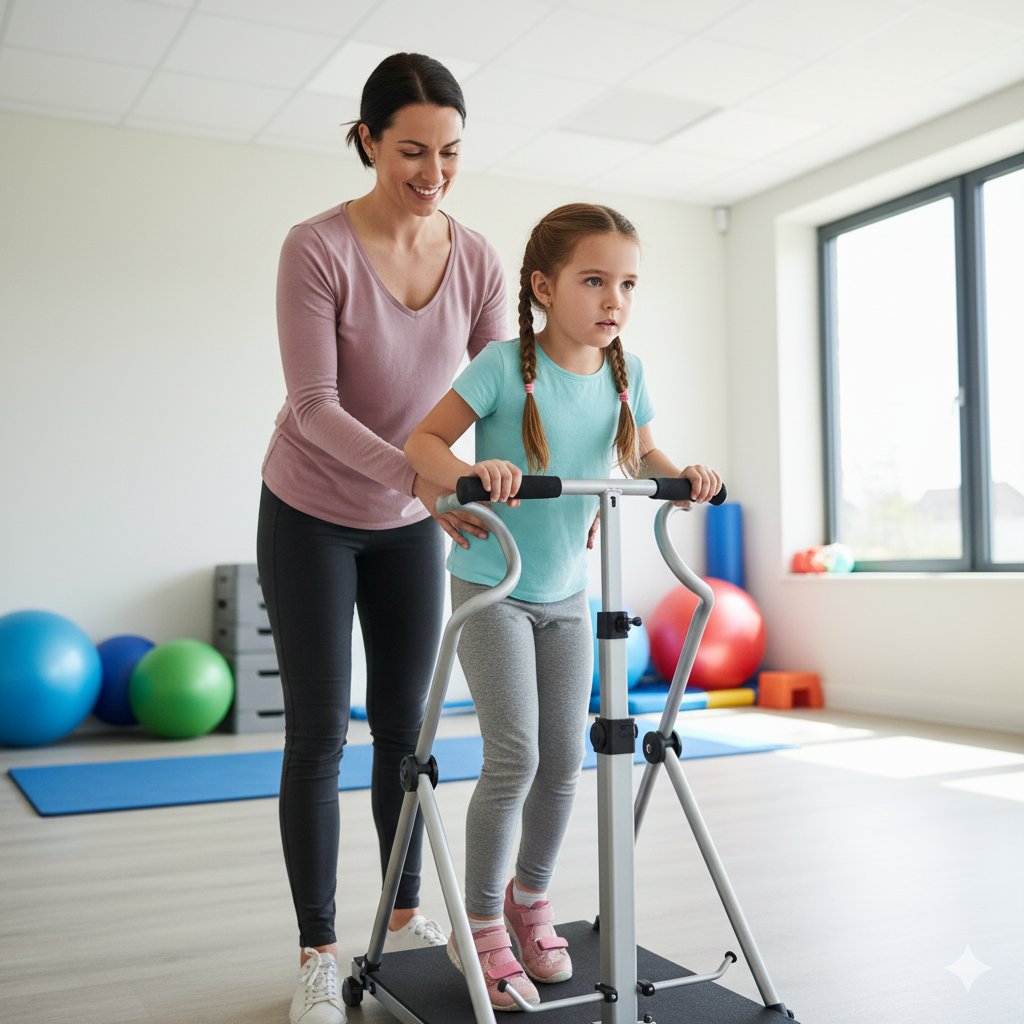Understanding Cerebral Palsy
Cerebral Palsy (CP) is a group of disorders that affect a
person’s ability to move and maintain balance and posture. It is
the most common motor disability in childhood. "Cerebral" means
having to do with the brain, and "palsy" means weakness or
problems with using the muscles. CP is caused by abnormal brain
development or damage to the developing brain that affects a
person’s ability to control his or her muscles. The symptoms
vary from person to person and can range from mild to severe.

Types and Symptoms
CP is classified by the main type of movement disorder involved.
Depending on which areas of the brain are affected, one or more
of the following movement disorders can occur:
-
Spasticity: Stiff muscles and exaggerated
reflexes (most common).
-
Dyskinesia: Uncontrollable, involuntary
movements.
- Ataxia: Poor balance and coordination.
-
Mixed Types: A combination of different
movement disorders.
Associated challenges can also include issues with sensation,
vision, hearing, swallowing, and speaking.
How We Support Your Child
Our multidisciplinary team works together to create a cohesive
therapy plan that addresses the specific needs of your child:
-
Physiotherapy: To improve walking, balance,
and strength. This includes gait training, stretching, and
exercises to manage spasticity.
-
Occupational Therapy: To develop fine motor
skills and make daily activities like dressing, eating, and
writing easier. We also assist with recommendations for
adaptive equipment.
-
Speech and Language Therapy: To help with
speech clarity, language development, and challenges with
feeding or swallowing (dysphagia).
-
Orthotics and Equipment Consultation: We work
with specialists to ensure your child has the right braces,
walkers, or other equipment to support their mobility.
Our Aim and Achievements
Our ultimate aim is to enhance your child's quality of life,
maximize their independence, and help them participate fully in
school and community activities. We focus on achieving
functional goals, such as:
-
Improving mobility to navigate their environment with greater
ease.
-
Enhancing communication skills to express themselves
confidently.
-
Mastering daily living skills for increased self-sufficiency.
-
Managing pain and muscle stiffness to improve comfort and
function.
-
Providing families with the knowledge and tools to support
their child's progress.
